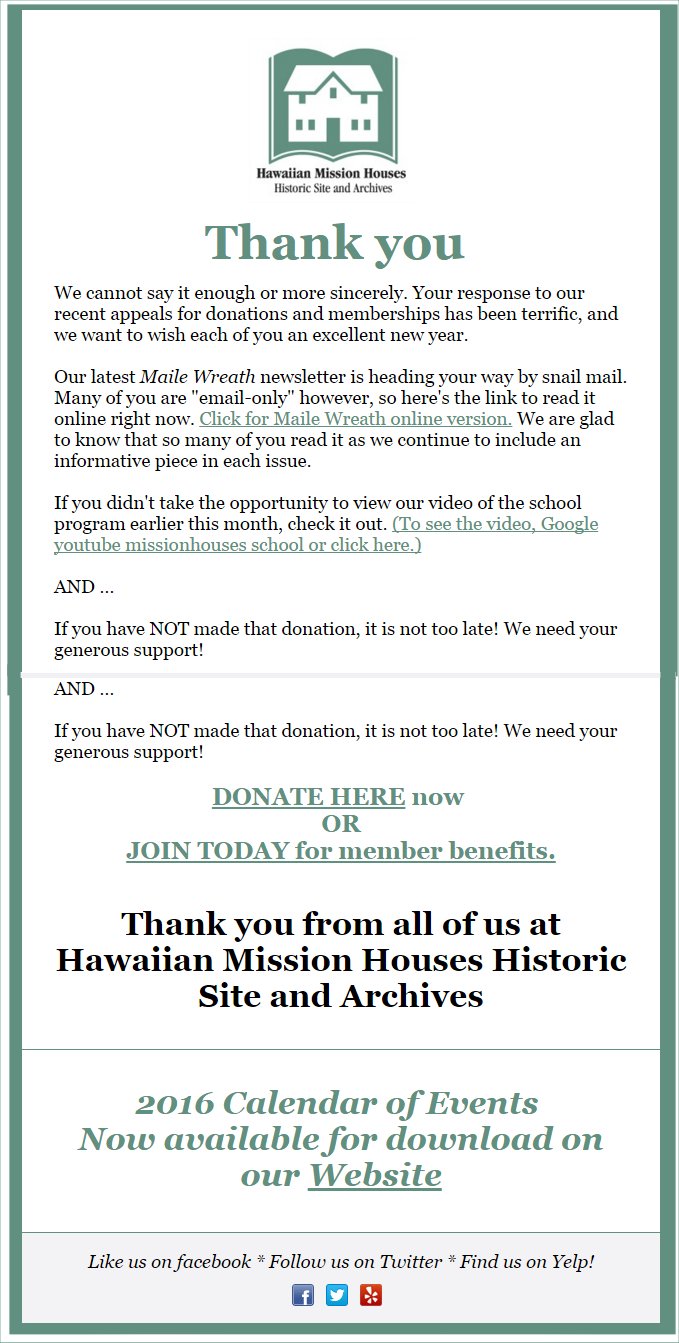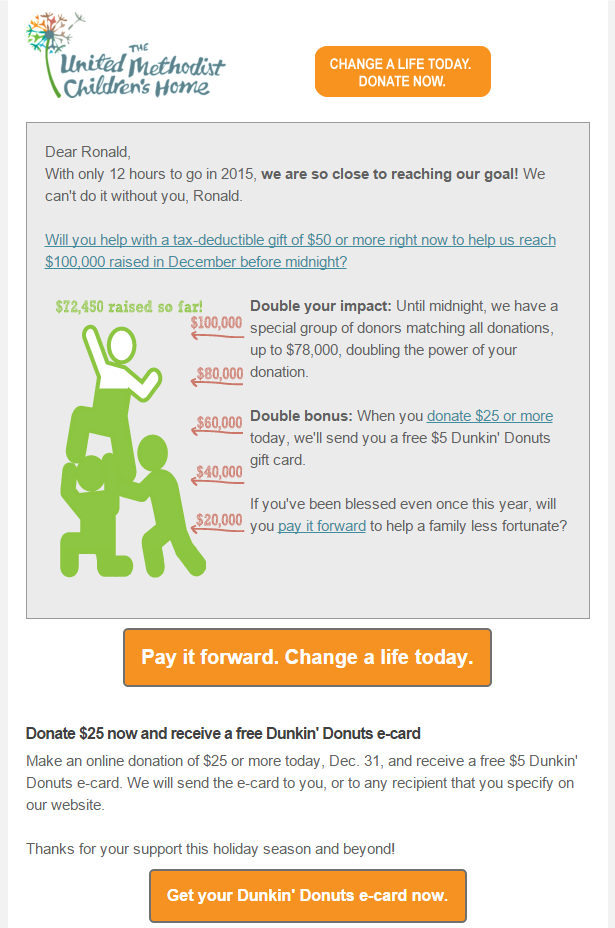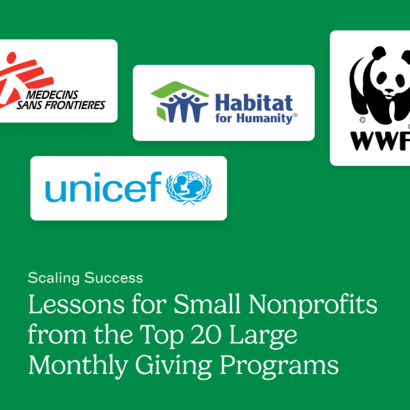The start of a new year is a great time for nonprofits to take the time to evaluate their fundraising programs to ensure they are performing at the highest levels possible and receiving the best response. Your e-mail campaigns may need just a few tweaks here and there, or they may require a major overhaul to improve those response rates.
As 2015 came to a close, I received a wave of year-end fundraising appeal e-mails. I wanted to share a few examples of some of the best practices to leverage your e-mail appeals to receive the best results.
1. Thank your donors
The Hawaiian Mission Houses Historic Site and Archives includes three restored houses, two of which are the oldest houses in Hawaii, and research archives which provide a unique glimpse into 19th-century Hawaii both onsite and online. They sent a sincere e-mail that started with “Thank You” in large letters and went on to explain that their response to appeals had been terrific. They followed it with a fundraising appeal for those who had not yet donated, reminding them that they are always in need of generous support. The e-mail was short and simple—copy length affects response rates, and research backs up the value of less content over more.

2. Create a sense of urgency
The United Methodist Children’s Home was established in 1871 to care for children orphaned during the Civil War and has evolved to help children and families as their needs grow and change. This nonprofit sent an e-mail on December 31st with the subject line: Donate in the next 12 hours and enjoy a free coffee on us! They informed readers that there were only 12 hours left in 2015 and they were close to reaching their donation goals. To encourage donors to make that last minute donation, they offered a $5 coffee gift card to donations of $25 or more. Many nonprofit e-mails included phrases such as “Last chance to donate…” or “The clock is ticking!” in order to create a sense of urgency for readers. The United Methodist Children’s Home inspired quick action with a gift, rather than using guilt to create action.

3. Share a story of impact
Homeboy Industries provides hope, training, and support to formerly gang-involved and previously incarcerated men and women allowing them to redirect their lives and become contributing members of our community. In their fundraising appeal e-mail, they included a compelling story about a woman who grew up surrounded by domestic violence and living as a single mother with barely enough food to survive. Determined to make a transformation, she joined Homeboy washing dishes, taking classes, and prioritizing her recovery. She now works at Homegirl Cafe as the sous chef and supervises all kitchen operations. Homeboy Industries wraps up their story with a call to action, encouraging donors to support the cause and help impact lives.

4. Make a clear call to action
Lacrosse the Nations is a nonprofit that unifies the lacrosse community to sustainably improve education and health while creating joy and opportunity for children in need. Their recent fundraising appeal caught my eye because there was very little content or distracting objects. The message was simple: a large photo of a young, smiling girl, a compelling headline and subtitle, and a call to action button for readers to donate on the website. The message was relevant, clear and engaging, and there was only one action button that led directly to the donation page.

5. Be apparent about where their donation is going
Maybe you have heard stories in the news about nonprofits that are using donations for purposes other than what donors had intended. Gain the trust of potential donors by being transparent about how and where their donations are being used. BirdsCaribbean, an international network committed to conserving Caribbean birds, recently sent out their year-end fundraising appeal e-mail. They asked readers to support with a year-end donation and followed their appeal with a detailed bullet point list that explained how the money would be used, including expanding their projects, maintaining current programs, providing training to volunteers and paying their small but dedicated staff.

These were just a few compelling fundraising appeal e-mails that stood out to me this year. I would love to share more examples of nonprofit e-mail best practices with you and your organization to help you see the best results.
Keep reading
Once a week or so we send an email with our latest article on online fundraising, nonprofit marketing and more. We never bug you; we just send you our latest piece of content. Subscribe now >



